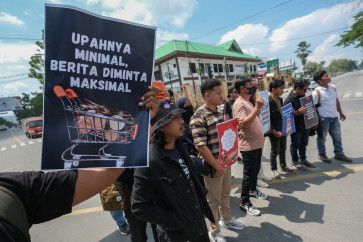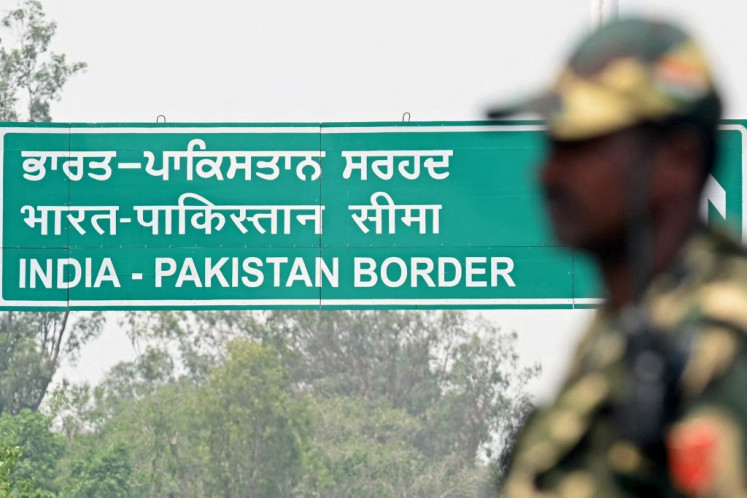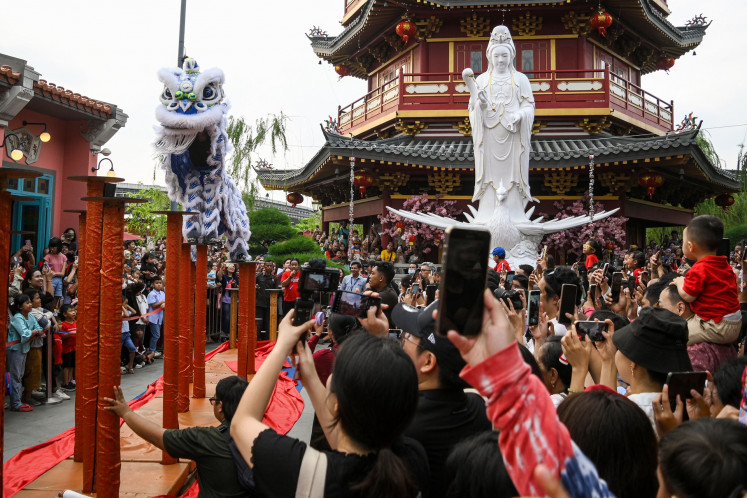Labor violence erupts in investor haven Batam
Batam island faced its third anarchic labor strike since 2010 on Thursday
Change text size
Gift Premium Articles
to Anyone

B
atam island faced its third anarchic labor strike since 2010 on Thursday. Workers ran amok in an attempt to force the local government to meet their demands for a much higher municipal minimum-wage. But the administration said it was unable to accommodate the aspirations of the island’s workers, one of the most favored foreign-investment destinations in the country.
More than 5,000 striking workers from the Muka Kuning, Kabil and Nongsa industrial zones took to the streets and vandalized several police posts. They protested against the shooting of two fellow demonstrators and the beating of 21 others in violent clashes with antiriot police on Wednesday.
They also thronged the municipal office demanding the mayor raise the monthly municipal minimum-wage to Rp 1.76 million (US$195.36) from the current Rp 1.2 million.
Most businesses, mainly labor-intensive manufacturing industries, suspended their operations as they did wish to become targets of the protesters’ anger.
The Batam mayor declined to meet striking workers and insisted he could only approve a wage hike to Rp 1.3 million as had been decided by the local tripartite wage council. He also called on labor unions that had sent their delegates to the tripartite wage council to disseminate the agreed wage hike in an attempt to end the rallies.
The workers were further outraged when Riau Islands Vice Governor Soeryo Respationo offered Rp 15 million to the demonstrators, accusing him of trying to bribe them.
Unionists from the Confederation of All-Indonesian Workers Union (KSPSI), Indonesian Metal Workers Union (SPMI) and Confederation of Indonesian Prosperous Labor Union (KSBSI) rejected the municipal tripartite wage council’s agreement on the wage hike and insisted Rp 1.76 million was the most reasonable rate of pay on the island.
The two-day anarchic rallies have drawn mixed reactions from many sides. Unionists and lawmakers condemned the use of violence in handling the rallies and criticized the implementation of the free-trade zone that had failed to improve the social welfare of workers and their families.
“The government has given investors various facilities, including tax-free imports and investment permits, but none of this brings social justice to locals, including our workers,” said Rieke Diah Pita-loka, a lawmaker from the Indonesian Democratic Party of Struggle (PDI-P), in Batam.
Although living costs in Batam are high, the minimum wage in the island is lower than that of Jakarta, Bekasi, Surabaya and many other municipalities.
The violent strike was the third to have rocked the island in the past two years. The first happened in April 2010 when thousands of people took to the streets and clashed with security personnel in their solidarity with workers of PT Drydocks World Graha. They were protesting against alleged racist behavior by foreign staff in the company.
In September 2011, five people were injured when rioting broke out at the PT Nexus Engineering Indonesia dockyard.
Batam, now a home to 26 industrial estates and more than 4,000 companies employing almost 300,000 workers from Java and Sumatra, is expected to receive billion-dollar investment packages from numerous countries.
Yayan Achyar, foreign-investment promotion executive at the Batam Free Trade Zone, regretted the violent industrial rallies.
“This foreign direct investment could be wiped out if the labor rallies continue and disturb the investment climate on the island,” he said.









